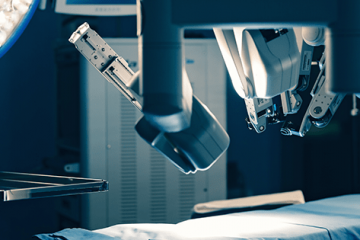
Robotically Assisted Surgery: ‘The Wild West of Surgical Training’
After almost 20 years, there is still no standardized training curriculum or unified credentialing policy for robotically assisted surgery.
ATLANTA — ROBOTIC HEART surgery never becomes routine for Dr. Douglas Murphy. Every time he enters the operating room and sits down at the steering console, he says, his senses are revved up and on high alert. His mind, focused.
Murphy is the chief of cardiothoracic surgery at Emory St. Joseph’s Hospital. He started out as a transplant surgeon in the 1980s and later became a pioneer in robotically assisted heart surgery. He’s done more than 3,000 operations with the robot, mostly mitral valve repairs and replacements — more than any other cardiac surgeon in the world.
READ: A Connection Gap Is Widening in Health Care
“In many ways doing robotic surgery is more stressful than open surgery,” says Murphy.
As some hail it as the next frontier in medicine, robotic surgery has become a highly scrutinized endeavor. The minimally invasive technology reduces trauma, bleeding and downtime for patients, and helps surgeon operate with a higher degree of precision. Common robotic procedures include prostate removals, hysterectomies, hernia repairs and mitral valve surgeries.
But troubling reports have surfaced about the safety of the DaVinci surgical robot, which dominates the market.
Last February, the FDA issued a safety warning against the use of robotic devices in mastectomies. In the past 10 years, more than 2,000 patients have been injured or killed by malfunctioning or mishandled robots, according to an NBC News investigation.
In some cases, patients’ blood vessels got nicked. Organs were burned or perforated in others, and broken instrument parts fell into operating sites.